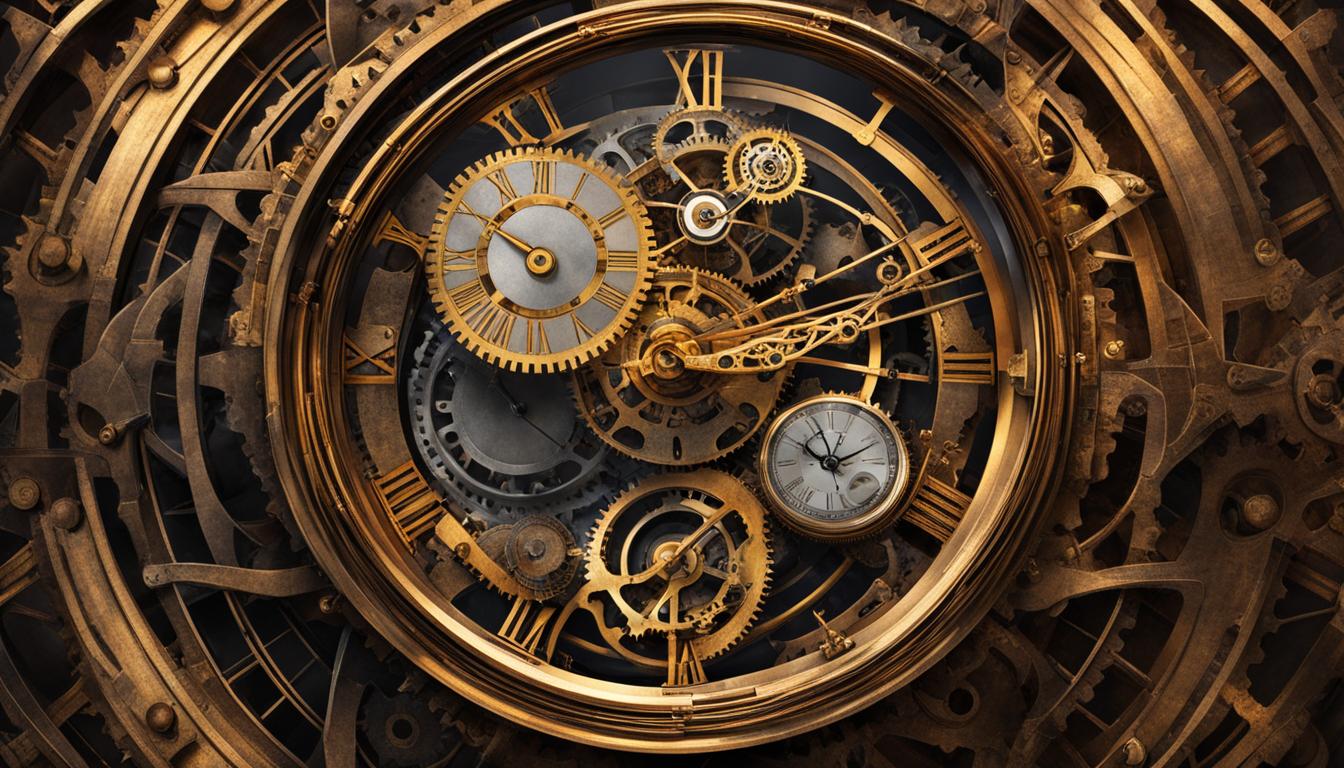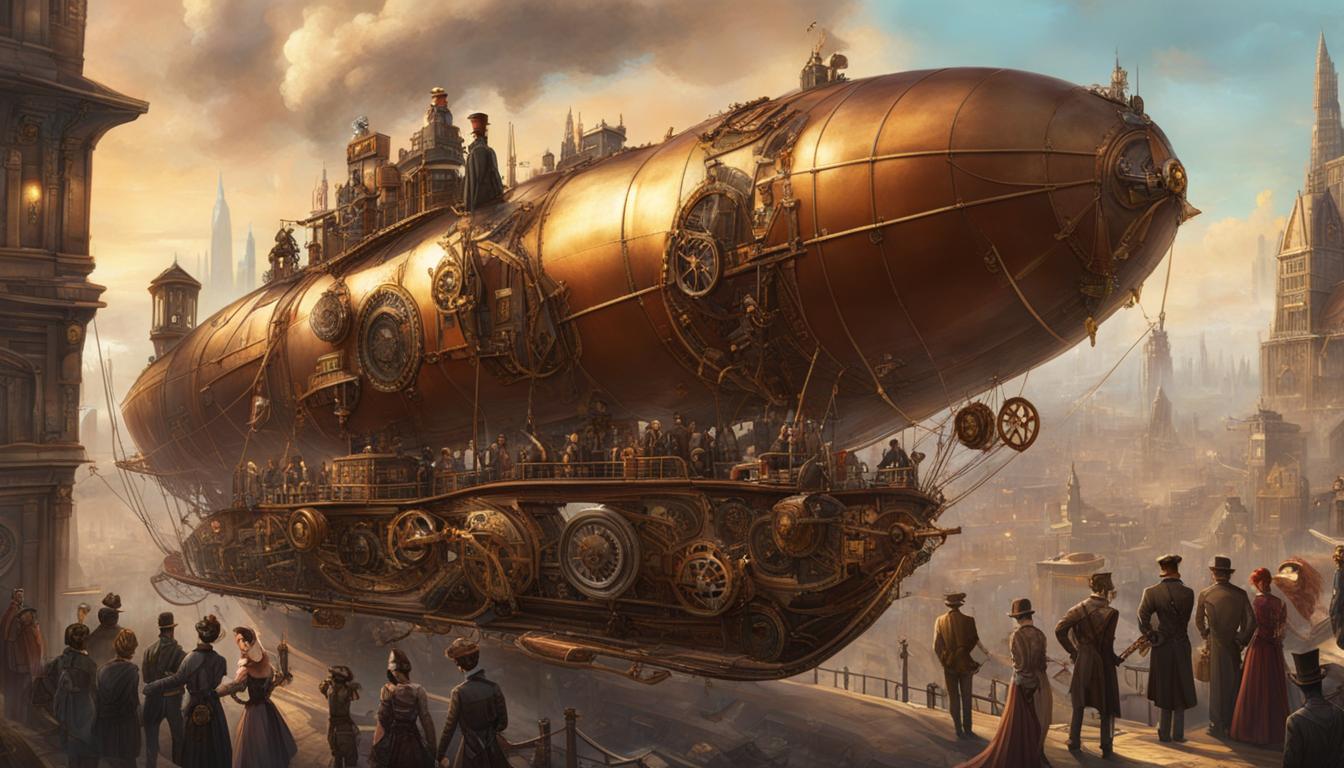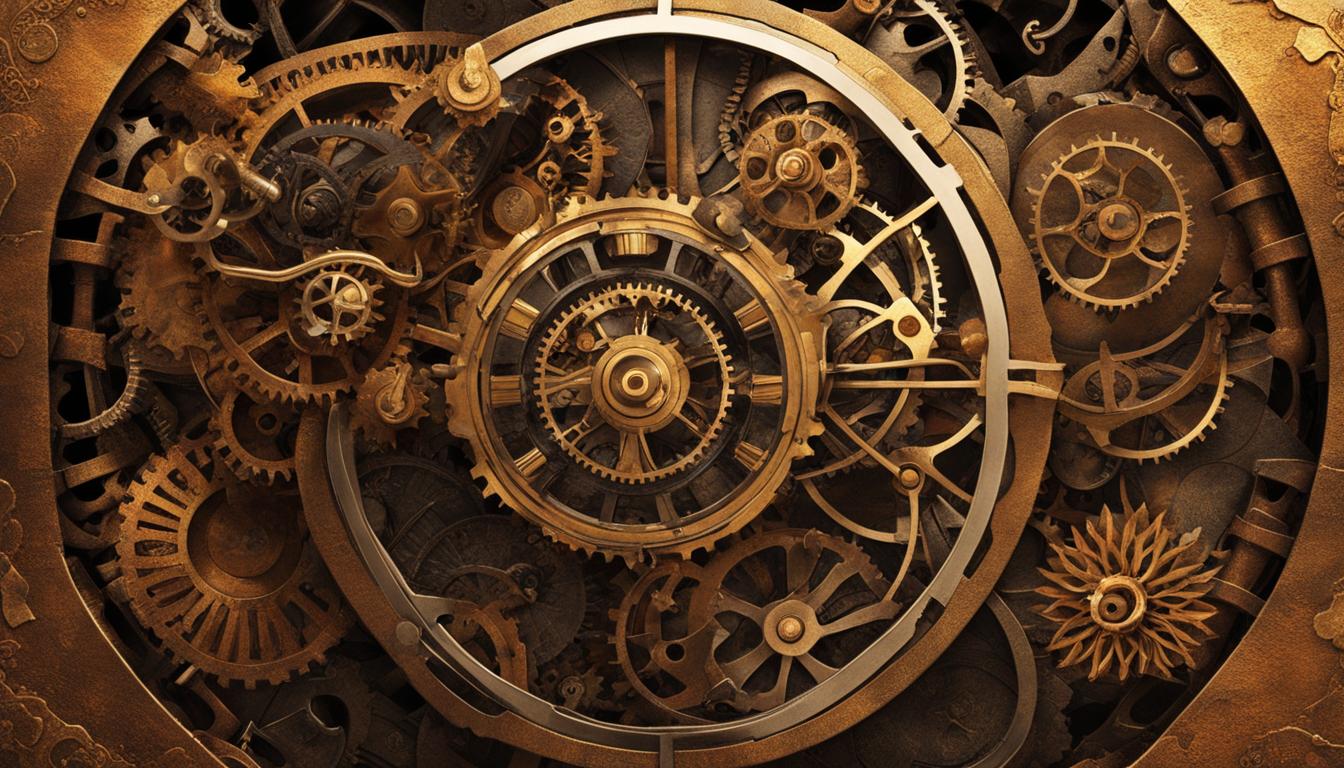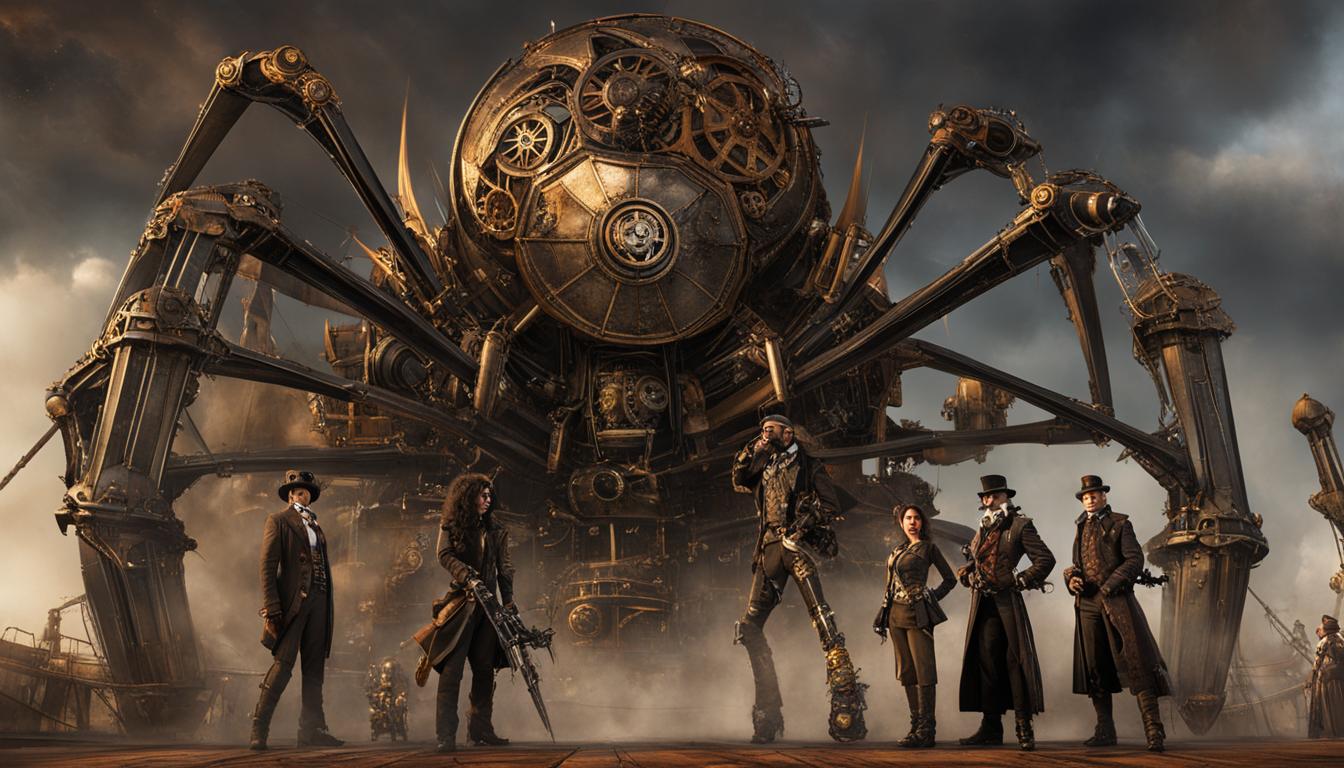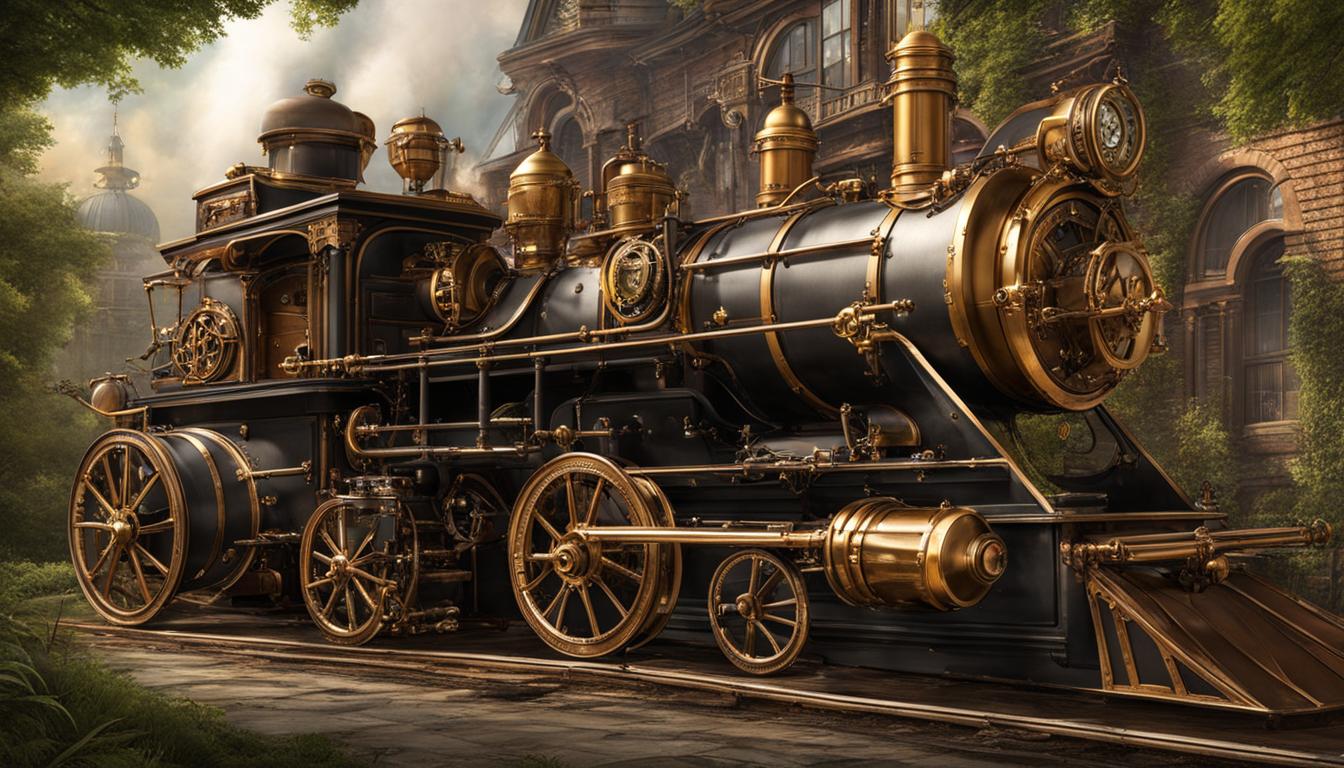Steampunk literature is a genre that sparks the imagination and raises profound philosophical questions. Through its fusion of technology, ethics, and society’s reimagining, this genre invites readers to ponder the complexities of existence. Dive into the world of steampunk adventures, where morality, existentialism, free will versus determinism, and human nature take center stage. The exploration of ethical dilemmas, the relationship between society and the individual, and metaphysical concepts adds depth to the genre. Prepare to delve into the nature of reality, perception, and the ethical considerations of steampunk technology.
Key Takeaways:
- Steampunk literature raises thought-provoking philosophical questions.
- It explores the fusion of technology, ethics, and society’s reimagining.
- Themes such as morality, existentialism, and free will dominate the genre.
- Readers are invited to contemplate the nature of reality and perception.
- Steampunk literature challenges conventional notions of ethics and technology.
The Intersection of Pre-Raphaelites and Steampunk
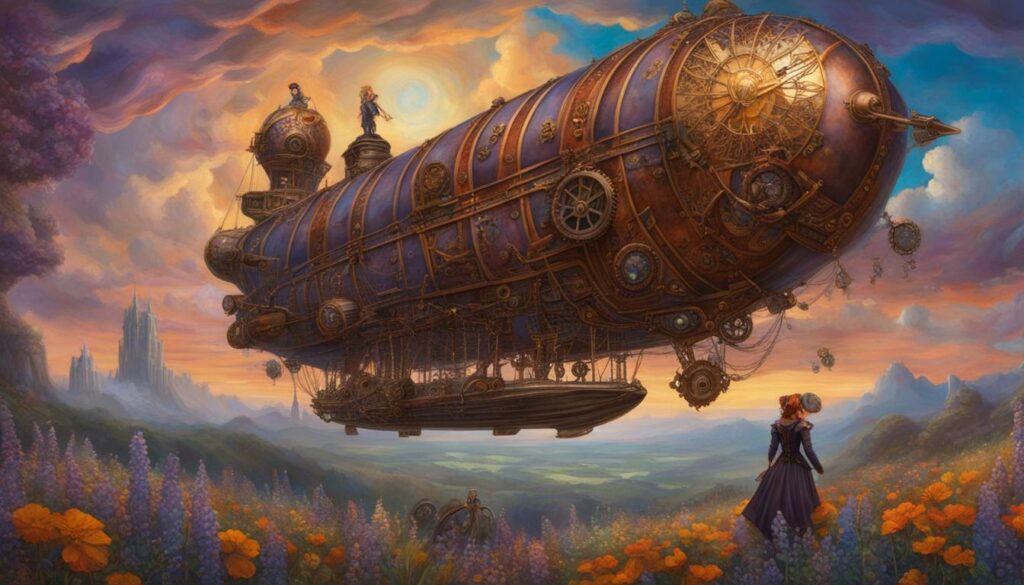
The Pre-Raphaelite movement and steampunk may initially seem like opposing philosophies, but upon closer examination, they share striking similarities that intertwine the aesthetics of the Victorian era. Both movements embrace an aesthetic style that rejects certain aspects of modern life and romanticizes the past. The Pre-Raphaelites, known for their emphasis on nature and intricate attention to detail, sought to create art that reflected their reverence for the natural world. Steampunk, on the other hand, transforms technology into art and romanticizes the Victorian era by celebrating its elaborate machinery and fashion.
While the Pre-Raphaelites drew inspiration from medieval and Renaissance art, steampunk finds its roots in the industrial revolution, combining elements from the Victorian era with futuristic technology. The shared love for craftsmanship is evident in both movements; the Pre-Raphaelites handcrafted their paintings, while steampunk enthusiasts often create intricately detailed costumes and gadgets. Additionally, both movements integrate elements from different time periods, blending the old and the new to create a unique aesthetic.
“The Pre-Raphaelites and steampunk both reject the constraints of their contemporary world, offering a nostalgic escape to a time defined by artistry and craftsmanship.”
Both movements challenge the conventions of their respective eras, inviting viewers and readers to question societal norms and explore alternative possibilities. The Pre-Raphaelites used art to challenge the dominance of academic styles in the 19th century, while steampunk challenges traditional notions of technology, offering a reimagined vision of what the Victorian era could have been.
Exploring the Intersection
The intersection of Pre-Raphaelites and steampunk offers a fascinating exploration of aesthetics and the fusion of historical and futuristic elements. By examining the shared values and themes of both movements, we gain a deeper understanding of the ways in which art and literature can transcend time and inspire new forms of creative expression.
The Unconventional and Strange in Steampunk Literature
Steampunk literature is renowned for its ability to push the boundaries of traditional storytelling, offering readers a unique and imaginative reading experience. One of the distinctive features of this genre is its incorporation of elements from weird fiction and speculative fiction. Notably, author China Mieville has made significant contributions to the genre with his works, such as “Perdido Street Station” and “The Scar,” which have become cornerstones of the “New Weird” subgenre.
In Mieville’s books, readers are transported to inventive worlds filled with imaginative species and thought-provoking concepts. His writing challenges the conventions of the fantasy genre, inviting readers to explore new dimensions and ideas. With his unique blend of depth, creativity, and a modern perspective, Mieville’s works stand apart from traditional steampunk literature.
China Mieville and the New Weird
The term “New Weird” emerged to describe the subgenre of steampunk literature that incorporates elements of weird fiction, speculative fiction, and Mieville’s distinct style. This subgenre embraces the unconventional and strange, intertwining complex social commentary with fantastical worlds. Mieville’s influence on the genre is undeniable, as his works have inspired numerous authors to explore new and innovative storytelling approaches within the steampunk framework.
“Perdido Street Station” and “The Scar” showcase Mieville’s ability to create vivid and immersive worlds that challenge our perceptions of reality. His writing style combines intricate plotting, rich character development, and a deep exploration of societal themes, making his works both captivating and intellectually stimulating.
By venturing into the unconventional and strange, steampunk literature expands its horizons and invites readers to question the boundaries of storytelling. Through Mieville’s contributions, the genre continues to evolve, offering a fresh and distinctive reading experience for those seeking something beyond the ordinary.
| Key Aspects | Steampunk Literature | China Mieville’s Works |
|---|---|---|
| Genre | Combination of science fiction and fantasy | New Weird: Subgenre of steampunk incorporating weird and speculative fiction |
| Themes | Ethics, technology, society | Complex social commentary, exploration of reality and perception |
| Writing Style | Varies across authors, but often includes Victorian-era language and imagery | Intricate plotting, rich character development, intellectually stimulating |
| Influence | Inspires authors to explore the fusion of technology, ethics, and society | Pioneered the New Weird subgenre, influencing other steampunk authors |
As the genre continues to evolve, steampunk literature embraces the unconventional and strange, challenging readers’ perceptions and opening new avenues for exploration. China Mieville’s contributions to the New Weird subgenre have redefined the possibilities of steampunk storytelling, encouraging authors and readers alike to delve into uncharted territories of the imagination.
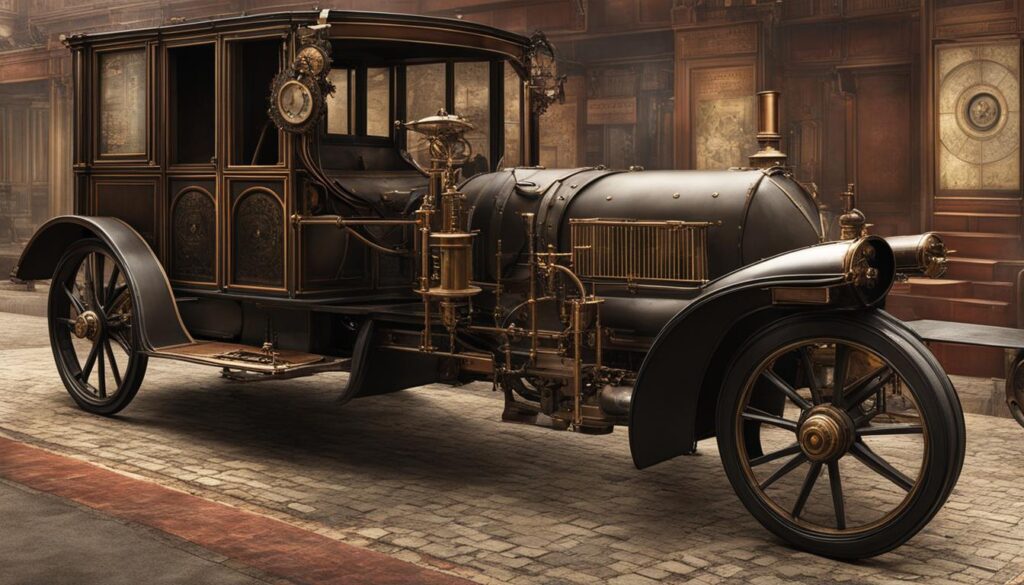
By showcasing feminine voices and challenging traditional gender representation in horror and weird fiction, authors like Selena Chambers are contributing to a more inclusive and diverse literary landscape. These narratives provide a platform for marginalized voices and offer readers a chance to explore the complexities of gender in thought-provoking and imaginative ways.
Conclusion
Steampunk literature, with its fusion of technology, ethics, and society’s reimagining, raises profound philosophical questions. Through the lens of steampunk adventures, readers are invited to contemplate the complexities of morality, existentialism, free will versus determinism, and human nature. The genre challenges traditional fantasy tropes and embraces the unconventional and strange, offering a fresh and imaginative reading experience.
Furthermore, steampunk literature contributes to the representation of gender in horror and weird fiction. By showcasing powerful feminine voices, it empowers readers, particularly women, and challenges traditional gender roles. This inclusive approach reflects the importance of diverse perspectives and narratives in the genre.
Overall, steampunk literature stimulates curiosity and captivates readers with its thought-provoking themes and imaginative storytelling. It invites us to question the nature of reality, explore the ethical considerations of steampunk technology, and appreciate the power of feminine voices in the genre. As readers continue to delve into the depths of philosophical questions, steampunk literature remains a captivating and evolving genre that pushes the boundaries of imagination.
FAQ
What philosophical questions does steampunk literature raise?
Steampunk literature raises thought-provoking philosophical questions that delve into the fusion of technology, ethics, and society’s reimagining. It explores themes such as morality, existentialism, free will versus determinism, and the nature of human beings.
Is there a connection between the Pre-Raphaelite movement and steampunk?
While they may seem different at first, the Pre-Raphaelite movement and steampunk share similarities. Both romanticize the past, reject certain aspects of modern life, value handmade creations, and integrate elements from different time periods.
What elements are incorporated into steampunk literature?
Steampunk literature pushes the boundaries of traditional storytelling by incorporating elements of weird fiction and speculative fiction. It offers readers inventive worlds, imaginative species, and thought-provoking concepts that challenge the conventions of the fantasy genre.
How does China Mieville challenge the influence of J.R.R. Tolkien?
China Mieville aims to break free from the clichés associated with Tolkien’s works and offers readers a departure from traditional fantasy tropes. He advocates for the exploration of new and fresh ideas in the genre, challenging the prevalence of swords, dwarves, and epic quests.
What is the significance of gender representation in horror and weird fiction?
Gender representation in horror and weird fiction is important to create more inclusive spaces. Writers like Selena Chambers focus on featuring strong female characters who challenge traditional gender roles and explore the experiences of marginalized individuals, empowering readers, particularly women.

